
While photography usually gets all the love, our phones have gotten really good at capturing video. Think about it — when was the last time you needed a camcorder for a vacation? With mobile cameras getting better each year, we're now at a point where smartphones can be used for pro-level videography.
Just like image quality, video performance varies heavily among phones. There are phones that take excellent photos but average video, and vice versa. Then there are phones that make editing your videos a breeze, and others that turn it into a chore.
We tested all the major flagship phones from the top brands to get to the bottom of these issues. So whether you're shooting for Instagram fame or just wanting to capture your family's precious moments without sacrificing quality, we believe we've found the five best phones on the market for recording and editing video.
Table of Contents
Comparison Chart

Key Comparison Points
Hardware Factors
- Starting Price: The phone's MSRP as of April 2019. While you may find a better deal if these phones go on sale, this is the highest price they will sell for.
- 4K Recording: Most smartphones can shoot at 4K resolution (2160p), but some may be limited to 30 fps while recording in this mode. A higher frame rate (such as 60 fps) is preferred for action videos, as the additional frames allow for a smoother recording. However, 24 fps is what's used in film and television, and what our eyes prefer, so we listed all available 4K frame rates.
- 1080p Recording: Shown here are the frame rates available while shooting in 1080p (Full HD) on each phone. While 60fps is no problem for most flagships, not all phones are created equal. Case in point: the Google Pixel 3 XL, which doesn't have a true 60 fps mode. Instead, it shoots 1080p video at 60 fps only if there is adequate light. If not, it resorts back to 30 fps.
- HDR Recording: Whether the phone supports HDR video recording. HDR (high-dynamic range) is a technique that reproduces a picture closer to what the human eye sees, helping to distinguish very dark objects from very bright ones. Currently, the best option available is for recording on smartphones HDR10+. Whereas HDR10 sends static metadata, HDR10+ sends dynamic metadata, allowing the display to calibrate the color and brightness on a frame-by-frame level. These additions help deliver a more realistic picture.
- Lens Configuration: The types of lenses used in the phone's rear camera. More lenses are ideal, as they give you flexibility in how the video looks. Each lens typically offers a different focal length and field of view. For the phones with multiple lenses on our list, each one lets you seamlessly switch between the lenses, even while filming, to find the right focal length for your video.
- Aperture: Represented by f-number, this is the ratio of the focal length to the aperture (diameter of the lens opening). The smaller the number, the larger the opening, and the more light is taken in for each frame of the video.
- Zoom: The available zoom levels for each phone. Optical zoom is always preferred as it is lossless zoom, allowing you close in on an object without degradation of the video quality.
- Optical Stabilization: Smartphone cameras are usually stabilized by one of two methods: optical image stabilization or electronic image stabilization. Despite the "image" part of its name, these stabilization methods assist with videography as well, as a video is essentially a series of photos. Optical Image Stabilization helps to reduce shaky videos by manually shifting the lens in the opposite direction of the movement of the smartphone's body, keeping the image centered. However, OIS is the inferior stabilization method of the two when it comes to video.
- Electronic Stabilization: Electronic Image Stabilization (or EIS) works by shifting the image after it hits the camera sensor to recenter it. EIS can predict movements, leading to a smoother video. However, because of the size of the image, it often isn't available on all modes, namely 4K at 60 fps (or 4K at any frame rate in the case of the iPhone XS Max).
- 960 fps Slow Motion Recording: Whether the phone supports 960 fps video recording. If so, what resolution and for how long. Only Samsung and Sony support the feature in the US, with both companies using an image signal processor that don't support real-time recording. Therefore, each company must use a workaround, namely the DRAM buffer, to hold the uncompressed video while recording. The result is a limited duration of under 0.5 seconds.
- 480 fps Slow Motion Recording: This is the other shutter speed which warrants the tag "Super Slow Motion." Like 960 fps, current processors don't support real-time recording at this high of a frame rate. Therefore, it requires the use of the DRAM buffer, limiting its duration. Only Samsung's Galaxy S10+ supports this framer rate, which has double the length of recording available to 960 fps.
- 240 fps Slow Motion Recording: For most phones, slow-motion videos are limited to 240 fps. However, the maximum resolution for this recording varies, with some OEMs opting for the preferred 1080p and others using 720p. However, for each option, the recording is unlimited, so you're able to record video until the storage fills up.
- Rear Flash: The type of LED flash available for video. Apple's True Tone system use four separate LEDs of varying color temperature to give flash videography a more natural look. Samsung's High CRI (color rendering index) system works similarly, except each LED used is capable of producing light with a wide range of color temperature. None of the other phones in this list have a comparale system, instead opting for a single, fixed color temperature.
- Front Camera Max Quality: The maximum resolution for video recorded by the front-facing camera (or cameras). We listed the maximum frame rate at this resolution as well. These specs are essential for those interested in live streaming and vlogging, as unlike the rear camera, you are facing the viewfinder.
- Max Internal Storage: The largest internal storage option available for the phone. Depending on the length, resolution, frame rate, and a host of inputs, videos can quickly eat up small storage. And without expandable storage (more on that next), you are stuck with either limited cloud storage or losing your videos forever.
- Expandable Storage: Whether the phone supports expandable storage via microSD. The feature, which has been an Android exclusive for years, allows you to increase the amount of available storage so you can save even more videos. For the phones on our list which include support for expandable storage, the standard supported is microSDXC. This version has a theoretical max capacity of 2 TB, although currently, the largest available option is 1 TB.
- Water Resistance (Depth/Time): Videography doesn't stop because of the weather, so you want a phone that you can use out in the elements. Because so many phones now have an IP rating, we required each phone on our list to have an IP68 rating, which ensures they can be submerged in water up to 1.5 meters for 30 minutes. Only the Xperia XZ3 needs its port to be plugged; the rest are all able to accomplish this without any modifications.
OS Considerations
- Manual Mode: Whether the native camera app has a manual mode for video, allowing you to configure aspects like shutter speed, ISO, and exposure to obtain your desired look.
- Disable EIS: The ability to disable EIS, or electronic image stabilization. This feature is useful for those using a gimbal for stabilization who don't need the system to correct for movement. While many Android phones do allow this in the native camera app, iPhone users will need to use third-party applications to take advantage of this feature.
- Video Encoding: The format of the video once it's stored on the hard drive. The most common format is H.264 (AVC). H.265, also known as HEVC, offers more efficient compression, making it easy to save more videos on your hard drive without sacrificing quality.
- Shoot Without Audio: The ability to shoot muted video, or without recording sound. While none of the phones here can accomplish this with the stock camera app, it's possible with third-party apps.
- Stereo or Mono Audio: Whether the audio is recorded in stereo, mono, or if you have the option to choose. Only the iPhone XS Max can switch between either audio recording mode.
- Audio Encoding: The format used for the audio that gets recorded along with your video.
- Audio Bit Depth & Sample Rate: Bit depth is the resolution of the sound data captured in an audio file. The higher the audio bit depth, the more accurate the sound is. The sample rate is the number of times per second the source sound is being recorded. For both terms, the higher the number, the better.
- Choose Microphone: The ability to choose which microphones to use for recording. While this feature is available via third-party apps on iOS, it is not possible on the version of the current stable version of Android. Android 10 added this feature in the latest beta version, so in the future, the Android phones here will potentially have the ability to choose a microphone for recording.
- Controllable Shutter Speed: Whether you can adjust the shutter speed of the video. Shutter speed equates to the time each frame is exposed to light. Lowering this duration will result in a higher frame rate, while increasing the amount of time the shutter stays open for each frame can allow for brighter videos.
- Controllable ISO: Whether you can manually adjust the light sensitivity of the video. ISO, along with aperture and shutter speed, determine the exposure of each frame, which allows for videos to be brighter or darker.
- Adjust Exposure:The ability to modify the exposure of a video recording. Using a slider, the phones which support this feature will let you adjust how light or dark the video is by automatically making changes to the ISO and shutter speed (and aperture in the case of the Galaxy S10+) to match the desired look.
- Lock Focus & Exposure: With this feature, by long pressing a section of the viewfinder, you can lock the focus on a particular subject. Then by tapping an icon, you can lock the exposure of the focused object, preventing the video from becoming blurry, bright, or dark while recording different scenes. Only the Galaxy S10+ doesn't let you lock exposure in this fashion. You have to manually the exposure to an amount higher or lower than the current exposure to lock it, typically leading to either an overexposed or underexposed video.
- Grid Lines: Which grid lines are available to help you line up shots. 3x3 is the standard grid lines available to most phones, but having more options is always better.
- Switch Lens: Whether you can use different lenses to capture video. With many smartphones coming with two or three rear cameras, having the ability to shoot using each of the lenses will help you get the desired look.
- Time-Lapse: Whether the phone can shoot time-lapse video. Time-lapse is a technique where the frame rate while recording is lower than the frame rate of the final video — essentially the opposite of slow motion. The result is a video which appears to be sped up when played back at a standard frame rate.
- Recording Aspect Ratio: The various aspect ratios available to record videos. While most phones' native cameras don't support this feature, it is possible to use third-party camera apps to adjust these ratios.
- Snap Photo While Recording: Whether the phone can shoot photos while recording a video, at what resolution.
- Video Geotagging: Whether or not the phone's default camera app can automatically add the location of the recording to the video file.
- Lock Lens While Filming: The ability to prevent the camera from switching the lens while filming. This feature is only available on the iPhone XS Max, preventing you from accidentally changing lenses (and potentially distorting the perspective) while zooming in videos.
Important Apps
- Built-in Video Editor: Whether the phone comes with a video editor app. While third-party apps are always available, having one designed by the OEM to work specifically with the smartphone's camera is still a better option. For basic editing, all Android phones come with Google Photos, and all iPhones come with Apple's Photos app. Samsung and Sony have even included a basic video editor in addition to Google Photos. But some phones, like the LG V40 ThinQ, also come with a robust video editing app built in.
- iMovie Support: One of the better video editor apps for mobile is iMovie. Exclusive to iOS, this video editing software provides everything you need to edit video, including being able to manage 4K videos. While it's not built-in, you can download the app for free on any iPhone.
- FiLMiC Pro Support: When it comes to mobile videographers, the editing app of choice is FiLMiC Pro. This third-party app has everything you need, so we felt it was important to clarify that it's available for all phones listed here.
Field Testing
- DxOMark Rear Camera Video Score: The grade given by DxOMark for the video performance of the rear camera.
- DxOMark Front Camera Video Score: The grade given by DxOMark for the video performance of the front camera. All but the LG V40 ThinQ and Sony Xperia XZ3 received an official score.
- Time to Start a Video: The minimum time required to open the camera app, change to video mode, and start recording. Ideally, you want the lowest time possible to ensure you don't miss a moment. However, each phone has faster methods such as double tapping hardware buttons or lock screen shortcuts for even faster times. We were unable to perform this test on our Sony Xperia XZ3 review unit before sending it back.
- Support for Moment Lenses: Moment offers popular set of telephoto, wide-angle, and other lens attachments for smartphones. The newest versions of these lenses require a special case to attach to the phone, and Moment only offers these cases for the more popular smartphones such as the iPhone, Galaxy, and Pixel.
How We Chose These Phones
These phones in the above chart weren't picked at random — they're our five finalists. To narrow down the field to only the best of the best, we started by setting some ground rules.
As we're an American website, we only chose phones that were officially released in the US. This eliminated some great options from Huawei and Xiaomi, namely the P30 Pro and Mi 9. While you can technically get some of these phones in the US, they will have limited LTE service in the States and won't have a manufacturer's warranty, so we could not recommend them to our readers.
A second major requirement was that every phone had to at least shoot at 4K resolution (2160p). 4K resolution is widely available on televisions, laptops, monitors, and even some phones. So to offer your viewers the best quality, you need to be able to shoot in 4K. Even if your content is being viewed on a phone with lower resolution, the quality will still be better.
Beyond that, we only considered current generation phones to make sure each of our recommendations would hold up to the test of time. Take the LG V40, for instance. While the V30 is an amazing phone from the perspective of videography, it's almost two years old and unlikely to receive future firmware updates. Similarly, though the LG V50 has been announced, it's not available at the time of this writing, so we had to leave it off the list.
Because videography has expanded to all environments, we believe it's important that each phone here is water resistant. The only certified way to confirm this is with an IP rating, so we only considered models that topped out at an IP68 rating to preserve your ability to film in water as deep as one and a half meters for as long as 30 minutes.
We also decided that each phone on our list had to support a slow-motion mode at least 120 fps. Mobile videographers these days are taking advantage of this feature for clever videos, so we feel it's a must for any phone to be considered among the best in this category.
Finally, we only listed one variant of each phone. Many of the devices in this list have sibling variants, such as the Galaxy S10+ with its smaller counterparts in the Galaxy S10 and Galaxy S10e. In these cases, we went with the largest variant of the device since a bigger screen will be helpful with editing videos.
Phone 1: Samsung Galaxy S10+
Easily the newest phone on our list, the Galaxy S10+ is a powerhouse of a phone. Similar to the Galaxy Note 9 before it, it's a phone that is remarkably good at so many things. Samsung has never been one to skimp in the camera department, and the Galaxy S10+ is no exception. Based on our testing, the level of dedication to make the rear camera great at photos was also extended to its video performance.
There a few features you will you find in the Galaxy S10+ that you won't on other phones on our list. The first is the front-facing camera's ability to shoot 4K videos at 60 fps. Not only is the resolution impressive (every other device on our list is limited to 1080p), but the fact that you can record at the higher frame rate of 60 fps is awe-inspiring.

The Galaxy S10+ is the only phone on our list capable of shooting super slow motion at both 960 fps and 480 fps. While both modes are limited to 720p, with enough lighting, you can take some fantastic videos capturing action that you could never see in real-time. While 960 fps is limited to less than half a second, being able to cut the frame rate in half for double the performance can be helpful for a similar style of video.
HDR video recording is possible via HDR10+. This should come as no surprise, as both Samsung and Amazon are pushing this new standard for broader adoption. What makes HDR10+ different from HDR10 is the use of dynamic metadata. This lets the display calibrate the color and brightness of each frame in the video, leading to more accurate playback on HDR10+ certified screens.
The Galaxy S10+ is also the only phone on our list with support for multiple aspect ratios for video recording within the stock camera app. You can shoot in either 16:9, 19:9, or 1:1, all with the preinstalled app. For the other phones, you need to download a third-party app to accomplish this.
Aside from its unique features, Samsung also does a few things better than its competition. When it comes to stabilization, the Galaxy S10+ leverages OIS (on the lenses which have it) and EIS for shake-free video. However, for videos which will have a higher degree of motion (such as action videos), there is Super Steady mode. Using the Ultrawide camera (for a similar look to GoPro cameras), you get even better stabilization. You do lose OIS and autofocus since the Ultrawide doesn't support these features, but you get some of the best stabilization available.
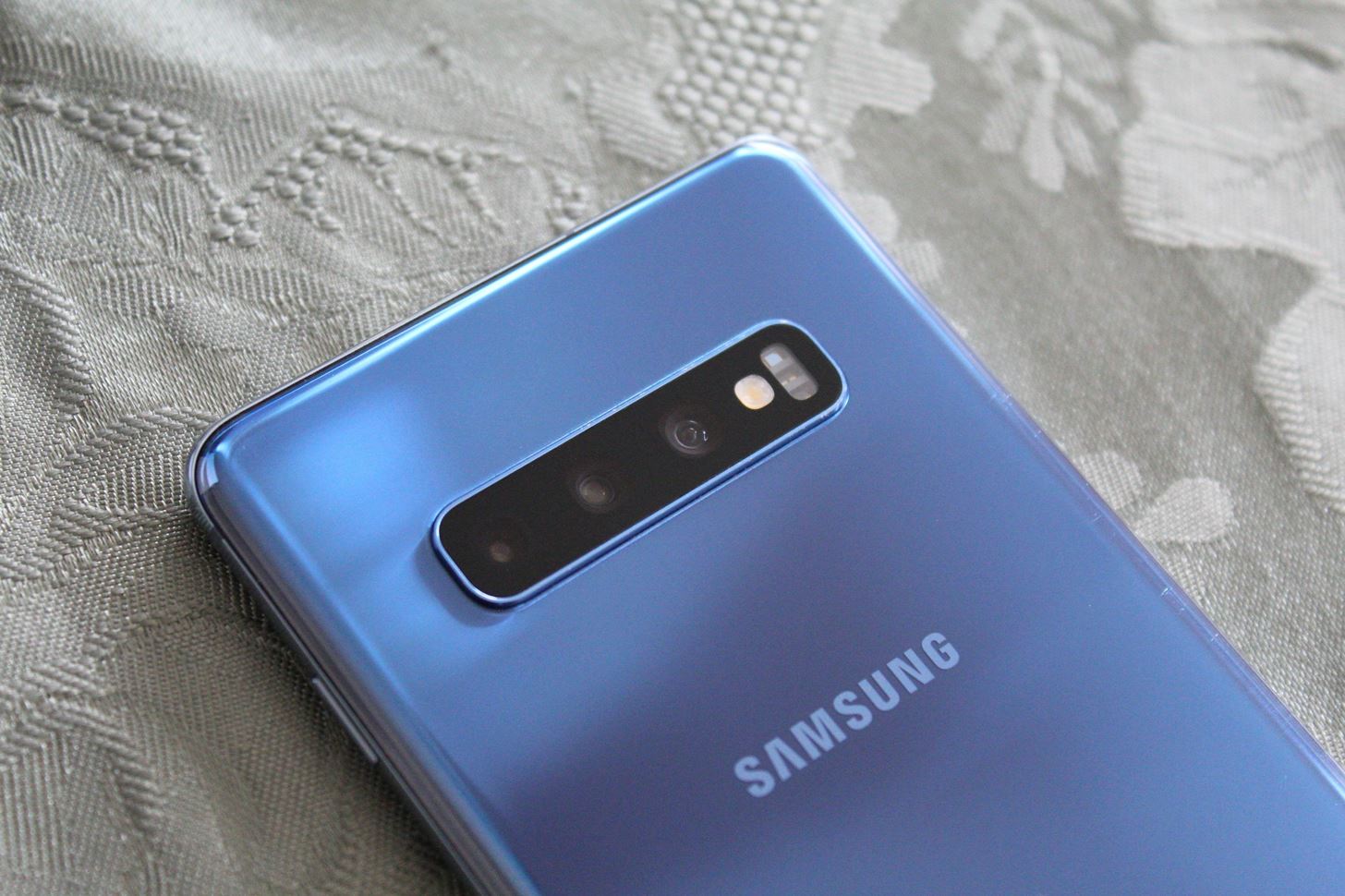
Autofocus is another function that the Galaxy s10+ does better than most of the competition. While it does require you to shoot in 1080p at 30 fps, you can take advantage of tracking autofocus. This feature lets you follow moving objects better, allowing you to better keep the focus on them as they move. And for the front-facing camera, you can take advantage of Dual Pixel autofocus, one of the fastest autofocus techniques available. This technique can be used n all shooting modes up to 4K at 30 fps.
The S10+ is one of the best phones on the market overall. But unlike some other great phones, Samsung made video performance a top priority, which allowed it to top our list. With this phone, you'll able to shoot amazing videos using multiple lenses (as well as third-party lenses from Moment) at the highest of resolutions and the smoothest of frame rates. HDR10+ will get you amazing contrast, and you'll be able to store your videos without having to worry about running out of space. Whether you're filming your vacation, starting a YouTube channel, or recording your PRs at the gym, this is the phone for you.

Phone 2: LG V40 ThinQ
A few years back, LG introduced the V-series, a phone designed for those who consider cameras the most essential part of a phone. As the series progressed, LG decided to separate itself from the competition by taking a heavy focus on video. The result of this progress is the LG V40 ThinQ. While the learning curve for the phone is higher than the rest, if you have patience and time, it is capable of some of the best video recordings.
What stands out on the LG V40 ThinQ is the full manual mode for both photos and video. A quick look at our list and you can see how the LG V40 ThinQ provides much more control over your video. Adjustable shutter speed? Check. Controllable ISO? Check. Modifiable exposure? Check. Hi-Fi audio recording? Check as well. With manual mode, you have nearly identical controls to what you would find on a DSLR.

However, it doesn't stop there. Videos can be recorded in H.264, H.265, or Cinelog. The latter is equivalent to the RAW format for images. Video is unprocessed, leaving colors in a more natural state and giving you more flexibility in the editing process.
Speaking of the editing process, no phone on our list has as extensive a video editor preinstalled as LG. We are talking similar performance to many costly third-party options, such as adding background music, merging videos, adding titles, and so much more.
Just like the S10+, there are three cameras available, giving you more flexibility when it comes how your video is filmed. One of these lenses is a telephoto shooter for 2x lossless zoom.

Another feature found in V40 ThinQ is the ability to shoot at 24 fps in 4K. As previously mentioned, this is the preferred frame rate for cinema and will help your videos seem more like movies than home videos. Unlike the iPhone XS Max, this frame rate is also available for 1080p recording, giving you a less storage-hungry option for 24 fps shooting.
However, the LG V40 ThinQ isn't perfect. For one, the time to start a video is surprisingly slower than the competition, nearly 1.5 times slower than our winner. Its price tag is pretty high, especially when considering this phone only has 64 GB of storage and OIS is only available on one of the rear cameras (the standard lens). Also, because of its lack of popularity, there isn't support for important accessories such as Moment Lenses.
The LG V40 ThinQ is ideal for those looking for more from their mobile phones. If you are serious about taking videos but prefer the flexibility of a phone versus a DSLR or camcorder, the V40 ThinQ is the best option on our list, at least out of the box. You have a slow-motion manual mode, an extensive video editor, and a range of options to use to get the best video possible. There are even useful features such as Point Zoom (automatic zooming into a specific section of the frame during recording) and Cine Effect (real-time color grading). With a bit of patience, this phone will take amazing videos you can proudly share anywhere.

Phone 3: Apple iPhone XS Max
While many of the improvements to the iPhone XS Max over its predecessor involved photography, don't undervalue the upgrades made to videography. Apple has been a leader in the smartphone industry when it comes to mobile videography, and this year's model is no exception. While its high price tag is unfortunate when compared to other Android options, as the saying goes, "you pay for quality."
On the back, there are dual rear cameras: one telephoto and one wide-angle. Each can be used for filming, and each offers a much different view. Thanks to the telephoto lens, lossless zoom is possible up to 2x. Additionally, for the more distant subjects, you can use the 6x digital zoom (although the video quality will deteriorate).

Both lenses are optically stabilized, meaning you will always have at least some stabilization at every resolution and frame rate. However, for the superior electronic stabilization, you will lose this at 4K resolution. Neither 30 fps nor 60 fps is supported, which is a real bummer, as every other phone on our list at least supports EIS in 4K at 30 fps.
On the front camera, all recording options are electronically stabilized. There's no optical stabilization, so while most movement will be eliminated, it won't be quite as shake-free as the rear cameras.
Because we take our phones everywhere, having a phone with water resistance is important. Whether we want to save a baby's first bath, an ocean adventure, or a rainy day, the iPhone XS Max will be able to manage. While each phone on our list is IP68 certified, the iPhone XS Max is certified for 2 meters (6.56 ft) of submersion instead of the standard 1.5.
Compared to most phones, the camera app is downright simple. Apple tries to limit any complications for amateur videographers by removing any features that aren't necessary to take a video. However, there is the option of third-party apps such as FiLMiC Pro, which give you access to features like adjustable shutter speed, ISO control, and white balance.

One unique feature of the iPhone XS Max is the ability to record in either stereo or mono from the camera app. For the other phones, stereo is the only option available, although the LG V40 ThinQ does let you record in with higher quality audio.
While the price tag is pretty high, one way to save a bit of money is to opt for a non-Max version of the phone, the iPhone XS. This variant starts at $999 and has the same camera setup as the XS Max. The only difference is the screen, at 5.8 inches instead of 6.4 inches. So outside of a smaller viewfinder, every other videography benefit of the XS Max should apply to the cheaper XS.
The iPhone XS Max is not just the best option for iOS users, but an excellent option for smartphones. It is one of the best cameras for those not looking to tweak any settings or make any adjustments. However, with the help of third-party apps, as you learn more about videography, you can grow with the phone and take advantage of more features. While it does lack many of the features found in the Galaxy S10+ and LG V40 ThinQ, it is still a top-tier option and great choice no matter what side of the mobile aisle you reside on.

Phone 4: Google Pixel 3 XL
At the time of its review, the Google Pixel 3 XL managed to get the highest ever DxOMark rear camera video score at 98. While it was recently topped by the soon to be released Samsung Galaxy S10 5G, for context, the S10 5G has four rear cameras while the Pixel 3 XL manages its score with a single lens. The testing done by DxOMark is among the best in the industry, so if they say this is an excellent phone for video, we believe them.
The Pixel 3 XL has class-leading stabilization for video. Using a combination of OIS and EIS, the Pixel 3 XL can capture videos you'll swear were taken using a gimbal. In a way, this is thanks to the original Google Pixel sacrificing OIS for EIS. To sell its commitment to the rear camera, Google created an EIS system that was as good as most OIS systems. Then, when they combined this system with OIS for video in the next iteration, the result was top tier stabilization. The Google Pixel 3 XL improved on this, managing to perform on par or better than even Samsung and Sony's SteadyShot mode.

Thanks to the growing popularity of Google's Pixel line, third-party accessory support has received a boost in recent years. Companies such as Moment support this phone (and all the Pixel lineup), providing access to lenses which offer different views for photo and videos.
The Pixel 3 has the largest collection of grid lines, including both 4x4 and the golden ratio. By having a collection of options, you can precisely line up shots to exactly where they need to be to get your desired image.

While the Google Pixel 3 XL manages to achieve what many would consider "technological magic" with a single lens, it is also limited by this as well. The lack of other lenses leaves you with only one focal length and one field of view for your video. There is no telephoto lens for optical zoom, instead of forcing users to rely on digital zoom.
Slow Motion is pretty limited on this phone as well. Super slow motion isn't available and slow motion is limited to either 120 fps or 240 fps, with only the former accessible at 1080p. And while it doesn't have the lowest maximum internal storage, it does lack expandable storage. Unlike the LG V40 ThinQ and Sony Xperia XZ3, you are stuck with only 64 or 128 GB of storage for your videos.
Speaking of limitations, the Pixel 3 XL has a painfully simple camera app. Like Apple, Google tried to eliminate any confusion for its users by giving them just the options they need and nothing more. For those looking for more from their video camera, we strongly recommend looking in the Play Store for third-party apps which offer more.

Another annoyance is 60 fps recording. Instead of a 60 fps mode like every other phone, Google instead opts for an "Auto" mode. In this mode, the phone will record at 60 fps. However, if there isn't enough light, it will revert to 30 fps. Therefore, without checking in a video editor, you won't even know if your video was indeed 60 fps, and you'll experience dips in frame rate depending on how well the surrounding lights expose your subject.
Back on the bright side, while the 3 XL already has the lowest price of any phone on our list, you can get all of its camera features for even cheaper by going with the smaller Pixel 3. Like with the iPhone XS Max and XS, you'll only lose screen real estate, as the camera system is identical on both models.
The Pixel 3 XL has a lot to offer. DxOMark considers it the best video camera on the market, and it is the cheapest phone on our list. It also has amazing stabilization for video. However, as the industry moves toward multiple cameras, Google's stubbornness to stick with one is its downfall. While it does have a lot to offer for those who find they usually stick with the primary camera, for those looking for more control, we recommend looking at the other phones ranked higher on our list.
Phone 5: Sony Xperia XZ3
Like the Pixel 3 XL, the Sony Xperia XZ3 is limited by its use of a single lens. Not having access to multiple lens limits videography, preventing unique looks that help your short film stand out. However, for those more on the amateur side, there is a lot here to enjoy. With a price tag on the low end, super slow motion video, and support for HLG format for HDR video, the Xperia XZ3 was an easy choice to make this list.

Let start with its use of HLG, or Hybrid Log Gamma. This is another standard for HDR that aims to solve the problem of HDR's inability to play on non-HDR televisions. HLG video starts with an SDR video and adds the metadata for HDR-compatible screens to read. What this means is that all videos recorded on your Xperia XZ3 can be viewed on all the televisions and mobile devices, whether they support HDR or not.
Sony is one of only a handful of companies that support Super Slow Motion (for US customers, Samsung is the only other OEMs to support this feature). Sony has included this feature for a while in their smartphones, specifically, recording at 960 fps. What's amazing about the XZ3 is that, where Samsung limits the resolution to 720p, Sony lets you film in 1080p with Super Slow Motion. It's only for a tenth of a second, but it does help improve the video quality, especially when viewed on a larger display. And if you find you need even more time, you can crank down the resolution to 720p for double the duration.
What's surprising is the lack of support for 480 fps. While Samsung included this option for even longer duration, Sony skipped it. It's also the only phone on our list that doesn't support 240 fps slow motion recording. The only other slow motion video you can take is 120 fps at 1080p.

Sony lacks any form of a manual mode. Except for color hue and brightness, there isn't much in the way of controls. But with the auto mode, there is a lot to enjoy.
Sony's SteadyShot is one of the better EIS systems on the market, removing most shake which occurs when not filming with a tripod or gimbal. Its autofocus is highly accurate, able to find the right target each time.
With the Sony Xperia XZ3, users looking at this phone will usually be deciding it and Google Pixel 3 XL. Both phones offer low pricing compared to rest on our list. Both provide simple interfaces that get you into a video quickly without messing with settings. Both have amazing stabilization, allowing you to get away with not having a tripod. The differences lie in video resolution. For those looking for 4K HDR recording and expandable storage, the Xperia XZ3 is right for you. However, for those the better overall video camera, the Google Pixel 3 XL would be your choice. Either way, you can't go wrong.
As a side note, we are aware of Sony's recently-announced XZ3 successor, the Xperia 1; a phone which solves many issues with the XZ3, including multiple lenses. However, it wasn't available to the US at the time of this writing, which exempted it from our list. We plan to revisit this ranking when it does come out later this year. So for those on team Sony, don't worry. The Xperia 1 should perform better than the Xperia XZ3 did.

Conclusion
While many of us have watched the growth of our smartphones as digital cameras, it will surprise some as to how great they've become at taking video. With phones now shooting in 4K resolution at 60 fps, and even 960 fps, our phones are accomplishing things previously reserved for only the most serious of videographers. With the same device you use every day, you can take some fantastic video — and with a little bit of patience, edit them so they look as good ones taken with dedicated cameras around the same price.
When considering specs, apps, and operating system features, the best option on the market is the Samsung Galaxy S10+. With three rear cameras, it manages to shoot HDR10+ videos. It can shoot in the shareable H.264 format and the smaller H.265 (HEVC). Both the front and rear cameras can shoot in 4K at 60 fps with EIS. With this phone, you can even replace your high-speed camera thanks to multiple slow-motion options from 120 fps to 960 fps.
But if you're someone looking to learn more about video cameras — someone who wants to learn what each setting means and how you can manipulate them for even better video, then look no further than the LG V40 ThinQ. Its manual mode rivals DSLRs when it comes to controls, and it even lets you shoot in CineLog for more control over editing. While it isn't the best option for amateurs, it is a must-have for enthusiasts.
This article was produced during Gadget Hacks' special coverage on smartphone-based video creator tips for filming and editing. Check out the whole Videography series.
Just updated your iPhone? You'll find new emoji, enhanced security, podcast transcripts, Apple Cash virtual numbers, and other useful features. There are even new additions hidden within Safari. Find out what's new and changed on your iPhone with the iOS 17.4 update.
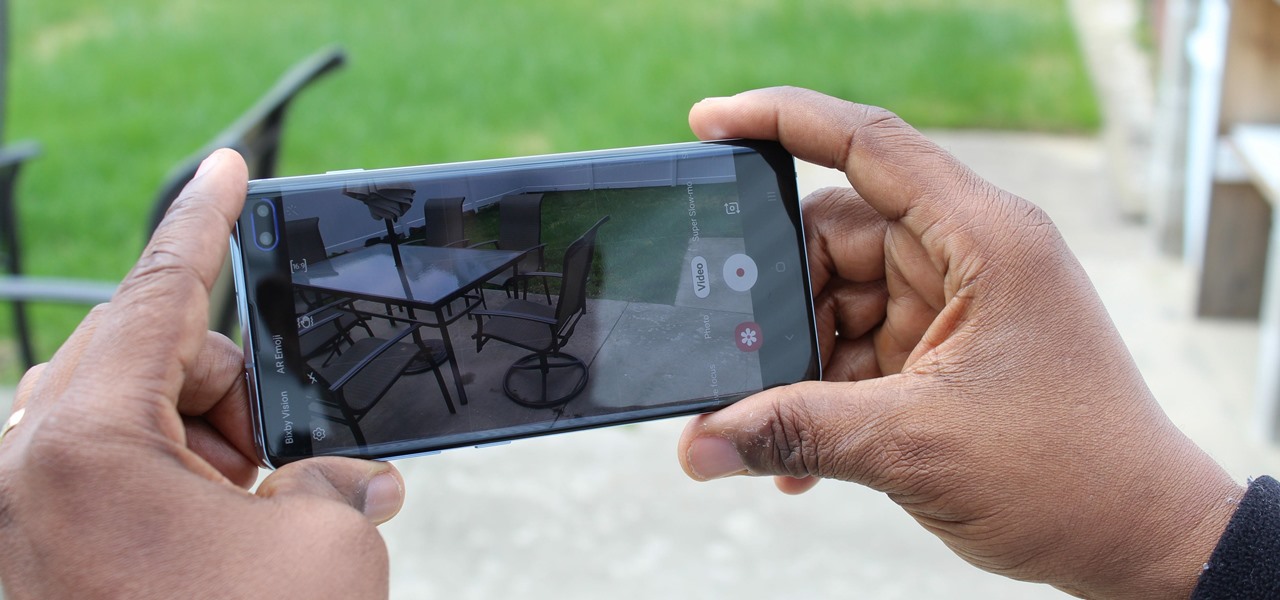


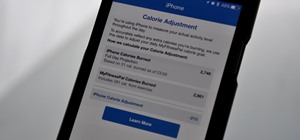





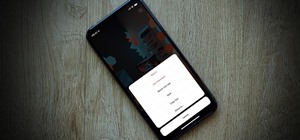
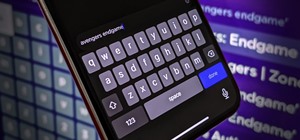


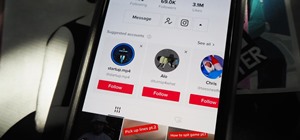
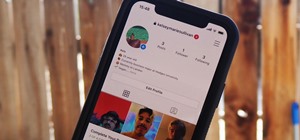



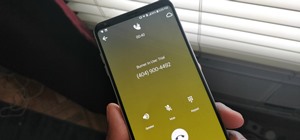
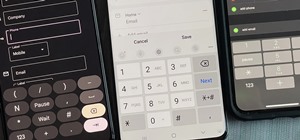

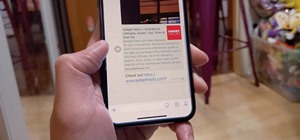

Be the First to Comment
Share Your Thoughts